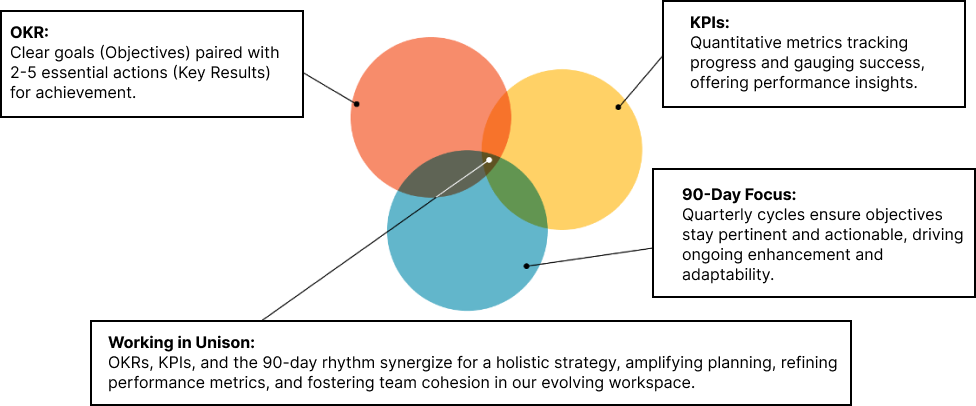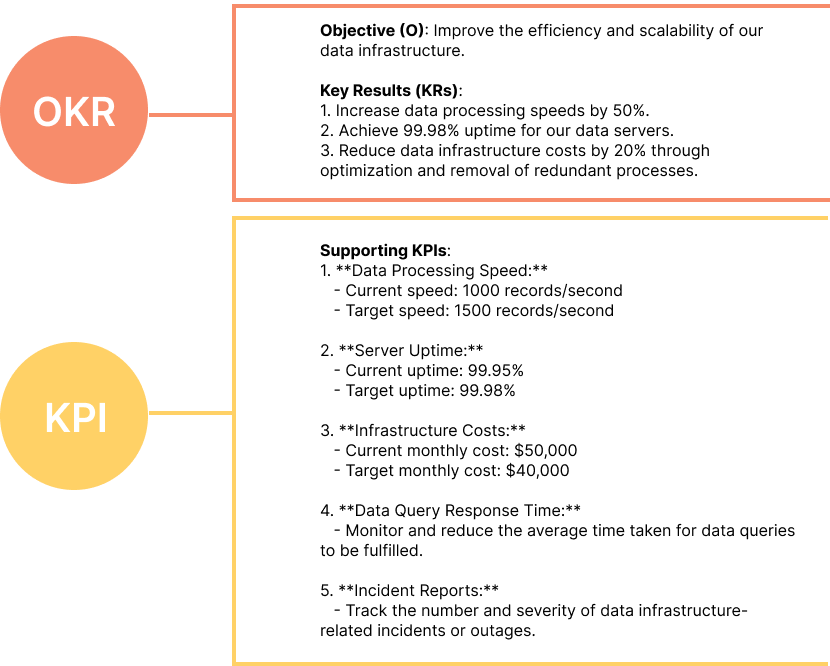
OKRs, or Objectives and Key Results, chart the course for organizational ambition, guiding us toward shared goals. KPIs, or Key Performance Indicators, then serve as the precise metrics that monitor and facilitate our progress, ensuring the path toward these goals is both efficient and effective. Integrating a 90-day focus into this framework synergizes our strategies, enhancing planning, honing performance metrics, and reinforcing team cohesion within our adaptive workspace.

OKRs and KPIs synergize effectively when viewed through the lens of ‘What’ and ‘How.’ Specifically, OKRs answer the question of “What” needs to be achieved, establishing clear and aspirational goals that drive teams and individuals towards a unified direction. These objectives provide the overarching vision and purpose. In contrast, KPIs detail the “How,” offering specific, measurable metrics that track performance and progress. By monitoring these indicators, organizations can assess how effectively they’re moving toward their OKRs, ensuring not just direction, but also operational efficiency and effectiveness in the journey towards those goals. Together, OKRs and KPIs provide a holistic approach to setting, pursuing, and measuring success in organizational endeavors.

2. Team Alignment: Transparent OKRs and KPIs ensure all departments work towards a common goal, promoting collaboration.
3. Trackable Progress: KPIs provide quantifiable metrics, making it easy to monitor and assess progress.
4. Enhanced Agility: Regular OKR and KPI reviews allow for quick strategy adjustments, ensuring adaptability.
5. Focus: Clear goals and results increase employee engagement and accountability.
6. Momentum: 90-day OKR cycles cultivate a rhythm of rapid achievement, keeping teams energized and forward-moving.